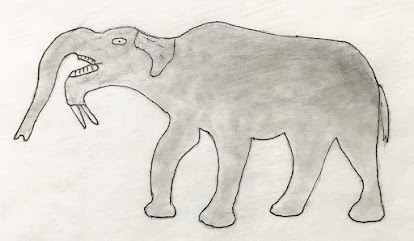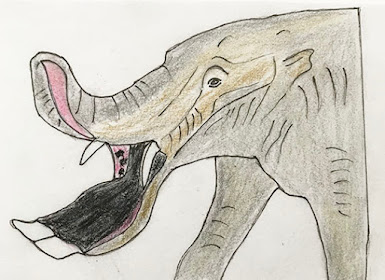The world’s largest land mammal that ever lived was the odd-toed, hornless, perissodactyl ungulate Paraceratherium that stood an estimated 5.3 m at the shoulder, with a long neck and 1.3 m (4.3 ft.)-long skull. This animal, which was a browser and could reach vegetation over 8 m above the ground, probably had a weight of around 15 to 20 tons. It was 4.5 times as heavy as the heaviest recorded elephant (6.6 tons). Its legs were long and pillar-like. Its total body length has been estimated as 8.7 m (28.5 ft) from front to back. At least one paleontologist has suggested that it had large ears in order to help reduce overheating of the animal.
This diagram shows the comparative size of Paraceratherium, which is an estimated 4.8 m at the shoulder, versus the modern-day African elephant Loxodonta africana, which is up to 2.4 m at the shoulder, and also versus the Late Jurassic dinosaur Brachiosaurus, which is 7.3 m at the shoulder.
A major complication in studying Paraceratherium is that specimens are incomplete. As a result, early and modern-day researchers are not in much agreement when it comes to what family this genus should be assigned. The taxonomic history of Paraceratherium and its species have, therefore, a long and complicated history; a good summary of which is given by en.Wikipedia.org. Paraceratherium is sometimes referred to as Baluchiterium or Indicricotherium, but these names are now obsolete and should not be used.
The general consenus today is that Paraceratherium is a hornless rhino-like animal but in its own family. In other words, it might be closely related to rhinoceroses but is not one. For example, the enlarged incisor teeth of Paraceratherium do not resemble the resemble the chisel-tusk incisor combination seen in family Rhinocerotidae.
There were some dog-size to cow-size animals in North America that might have been the earliest ancestors of Paraceratherium. They lived during the latest Eocene to early Oligocene, and they could have migrated via Beringia 1 (see one of my recent previous posts) into Asia.
Several genera of Asian Oligocene animals that closely resemble Paraceratherium have been named, but making comparisons can be difficult because of inadequate fossil remains. Diagnoses of these genera are based primarily on a few molar teeth (each molar tooth was the size of a human fist) and on skull characteristics.
Most modern workers agree that Paraceratherium lived only during Oligocene time and was confined to Asia. It ranged from Caucasia through Central Asia, Kazakhstan, Tibetan Plateau, Pakistan, Baluchistan, Mongolia and northwestern China. It lived probably in dry, temperate to subtropical woody shrublands. This animal lived during an interval of global cooling. During the Miocene, the climate warmed up, grasslands replaced widespread shrublands, and Paraceratherium went extinct. It is likely that they were replaced by gomphotheres, which were newcomers that ate grass rather than leafy shrubs.
I strongly recommend watching “The Rise and Fall of the Tallest Mammal to Walk the Earth.” It is a PBS video on YouTube about Paraceratherium. It is really good and has been watched by over 3 million viewers!
Useful References:
*Prothero, D.R. 1994. The Eocene-Oligocene transition: Paradise lost. Cambridge University Press, New York, 291 pp. (paperback). See pp. 195–200.
*en.wikipedia.org
*www.prehistoric-wildlife.com












